
Yarrow – Achillea millefolium L.
Detailed description of Yarrow :
Achillea millefolium L. (Known or old, folk names: common yarrow, medicinal yarrow, mouse-tail, chickweed, tickweed, bone-flower, John’s-wort, thousand-petalled yarrow, barberry, tickweed, tickweed, mousetail, mousetail grass, thousand-leaf grass, hundred-leaf grass, patchy thousand-leaf grass, turkey grass, musk-grass, musk-grass, musk-grass, barberry, achilles grass, sweetgrass, maidenhair) Compositae – Compositae Yarrow is a perennial plant. Its stems spread in the ground and, when they emerge, produce annual green shoots, 15-30 cm tall, but sometimes up to 1 m tall; erect and inbred. Its leaves are bipinnate and inverted. Its leaves have an elongated lanceolate outline and are divided into many fine frills, the leaf spine or main ribs are lined with leaflets cleft on two sides on the wing, the cymes of which are again cleft on the wing, the terminal cymes are pointed. At the top of the stem is the corymbose inflorescence, consisting of many small flowers. The flowers form little heads, which are so arranged that they all come into one plane, the lower branches being longer and the upper ones shorter.
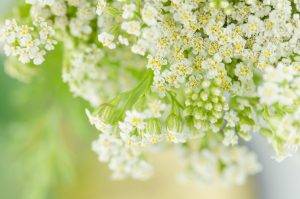
Cat’s-ear – Achillea millefolium
Occurrence:
Cat’s bark is a very common plant of ours, spread all over the country. It can be found in meadows, pastures, grasslands, roadsides, field margins and gardens, and at the edge of woods. It is found mainly in Europe and North America and Asia, but also all over the world.
Medicinal properties of yarrow:
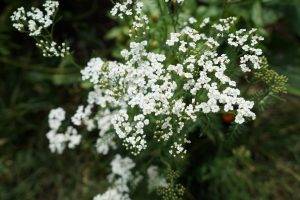
Achillea millefolium
The flowers, leaves and young twigs of yarrow contain bitter and tannic substances as well as volatile oil. The plant can be used to produce 3 types of drug, flower(millefolii flos), grass(millefolii herba) and leaf(millefolii folium). It has long been used in medicine (some accounts go back as far as 3000 years!), and to treat digestive organs and mucous membranes, as well as boils. The leaves, which are picked when in flower but stripped of their stems, are sold dried under the name herba hillefolii and are used mainly as a blood purifier. The freshly extracted sap of the leaves and the decoction of the young leaves are drunk in spring (spring cure). The crushed fresh leaves and the dried flowers are used in warm poultices mixed with and moistened with stool grass.
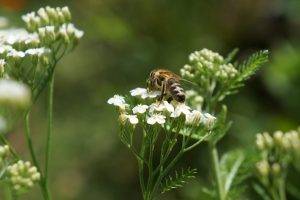
Cat’s Claw – Achillea millefolium
Most often used for the inflorescence alone, sometimes the inflorescence with the leaves, sometimes just the leaves. An extract(extractum millefolii) is also made from the yarrow. It is bitter, which is why it used to be used instead of hops in brewing beer. Leaf dope contains no blue oil and no azulene, while medical yarrow and the white-flowered species of its subgenus (morphologically minimally different) contain yarrow oil, azulene blue oil. None of the yellowish, pinkish, purplish flowers (contrary to popular observation). 8-10% of the essential oil contains azulene, and the oil is used to make ointments to relieve inflammation, eye treatments, face creams and skin care products. (100 g of dried plant must contain at least 0.3% essential oil) The tea of yarrow is recommended as an appetite stimulant, digestive stimulant, antispasmodic, to promote biliary and hepatic functions, to eliminate menstrual disorders, to cure urinary (kidney stones) and respiratory disorders, to lower blood pressure, to treat varicose veins, gastritis, enteritis and prostate disorders. Externally, it is a poultice and expectorant for gum, eye and inflammations, and for nosebleeds. It is used alone and in mixtures with other plant drugs. Its flavonoids help to expel intestinal gases, relieve cramps, its bitter substances act on the functioning of the intestinal walls, and luteolin acts on menstrual pains. Achillin and azulene are mucilaginous, bactericidal and insecticidal, with mild astringent action. Named after the legendary Greek hero Achilles, Achillea was used in the Trojan War to clean wounds and stop bleeding, used by the Druids to predict the weather and was considered a good luck charm, hung over the door to ward off illness. The Chinese threw fifty identical dried stems of yarrow into the air and divined from the pattern that fell. Also known as the ‘iodine of the fields’, the plant was also used to dress wounds in the First World War (it was recommended by the military doctor Dioscorides). Externally it was used for rheumatism, haemorrhoids(sitz bath– also recommended by Hippocrates) and pelvic pain, but also for eczema, itching of the skin, wounds and conjunctivitis. For a sitz bath, 100 g of dry plant is recommended for 20 litres of warm water. In the past, ointment was made by mixing the crushed plant with fat and used to treat wounds that were difficult to heal, pus, skin infections and burns. It used to be a sought-after herb, and as such was listed as an official herb in the pharmacopoeia. Today it is only used as an ingredient in some special tea mixtures and is used in folk medicine and in some cases in homeopathy as a blood purifier. It is a common ingredient in cosmetic preparations. Japanese scientists have studied the anti-tumour effects of achillin in leukaemic mice. The sap of the leaves can be used to clean wounds and stop bleeding from minor cuts. Its young and tender leaves used to be a popular vegetable and were used in spring soups, salads and white sauces for their mild aniseed flavour. In small quantities, becausetoxic if ingested in large quantities! Avoid consumption by pregnant and nursing mothers! Putting it in small bags keeps moles and other insects away. Its seeds were also used in the past to preserve wine by placing small sachets inside the barrel (anti-fungal). In contact with skin may cause irritation and rashes! Do not use in any form! Avoid sunlight on body surfaces treated with fresh plant! (Urine can turn dark brown, a natural phenomenon)
Cat’s tail tea:
add 1 teaspoon of dried plant to 2.5 dl of boiling water and soak for 5 minutes. Daily dose 3-4 cups, 1-2 cups recommended as a course. Drinking tea of its flower helps to fight acne, cellulite. Its tea is an antipyretic, anti-inflammatory, antispasmodic, digestive, diuretic, hypotensive.
The active ingredient in yarrow:
Aconitic acid, azulene, achillein (sesquiterpene lactone), phosphorus, lime, chlorine, iron, sulphur, sodium, magnesium, salicylic acid, potassium, starch, tannic acid, glucaloid, luteolin, bitter substances, konitic acid, aspargine, acetate esters, resin, essential oil of fatty oil, the latter mainly found in the flowers. It contains more than 100 compounds of essential oils: monoterpenes, cineole (8%), sabinene, camphor, linalool, sesquiterpenes, carifillene, germakrene, bisabolol, camazulene, precursors: proazulenes (achillicin), sesquiterpene lactone, flavonoids, phenolic carboxylic acids, coumarins, polyols, betaines. (Even chamomile contains proazulene) In inflorescence: 0.2 – 0.55% essential oil. In leaves: 0.02 – 0.07% essential oil.
Collection:
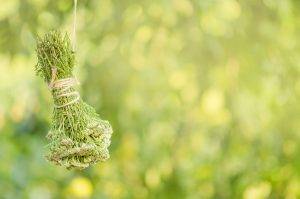
Yarrow – Achillea millefolium
Yarrow should be collected in June and July, the leaves stripped of their stems and dried on tarpaulin in the attic. The flower umbels should be pinched off so that the stem part, including the top, does not exceed 5-6 cm in length. In mountainous areas, pink-flowered catkins are often found. People consider such pink-flowered ones to have a stronger effect than white-flowered ones. The dry yarrow can be stuffed into a bag. 6 kg of fresh leaves will make 1 kg of dry leaves. The plant parts should not be exposed to direct sunlight when drying! In organic gardens, it is used as a compost activator, helping the composting process. Loved by butterflies, fritillaries, quail, ladybirds who help control pests. (Very easy to spread/propagate) The “flower doctor” of the garden, the secretion of its roots increases the resistance of plants in the immediate vicinity to disease, or at least increases their resistance. “Women would save themselves a great deal of trouble if they would occasionally have recourse to the cattail” Reverend Kneipp
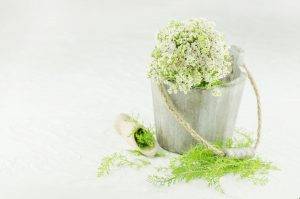
Yarrow – Achillea millefolium
Description Occurrence Effect Tea Active ingredients Seat Bath Collection from Source: Dr. Ferenc Darvas and Dr Gyula Magyary-Kossa,Domestic herbs, their production, marketing, effects and medicinal uses Béla Páter, Wild medicinal plants, their production, use, distribution, and marketing Andreas Wacker, Medicinal plants in homeopathy Rápóti-Romváry, Medicinal plants Reader’s Digest, Nature’s herb garden Kim Hurst, Treasures of Nature Bertalan Galambosi, 88 colour pages on spices and herbs Alexandra, Handbook of Medicinal Plants Alexandra, Treasury of medicinal plants Kolos-Pethes, Our domestic medicinal plants Andor Oláh, Biofolders Barbara and Peter Theiss, Pharmacy of Forests and Fields István Isépy, Medicinal plants
